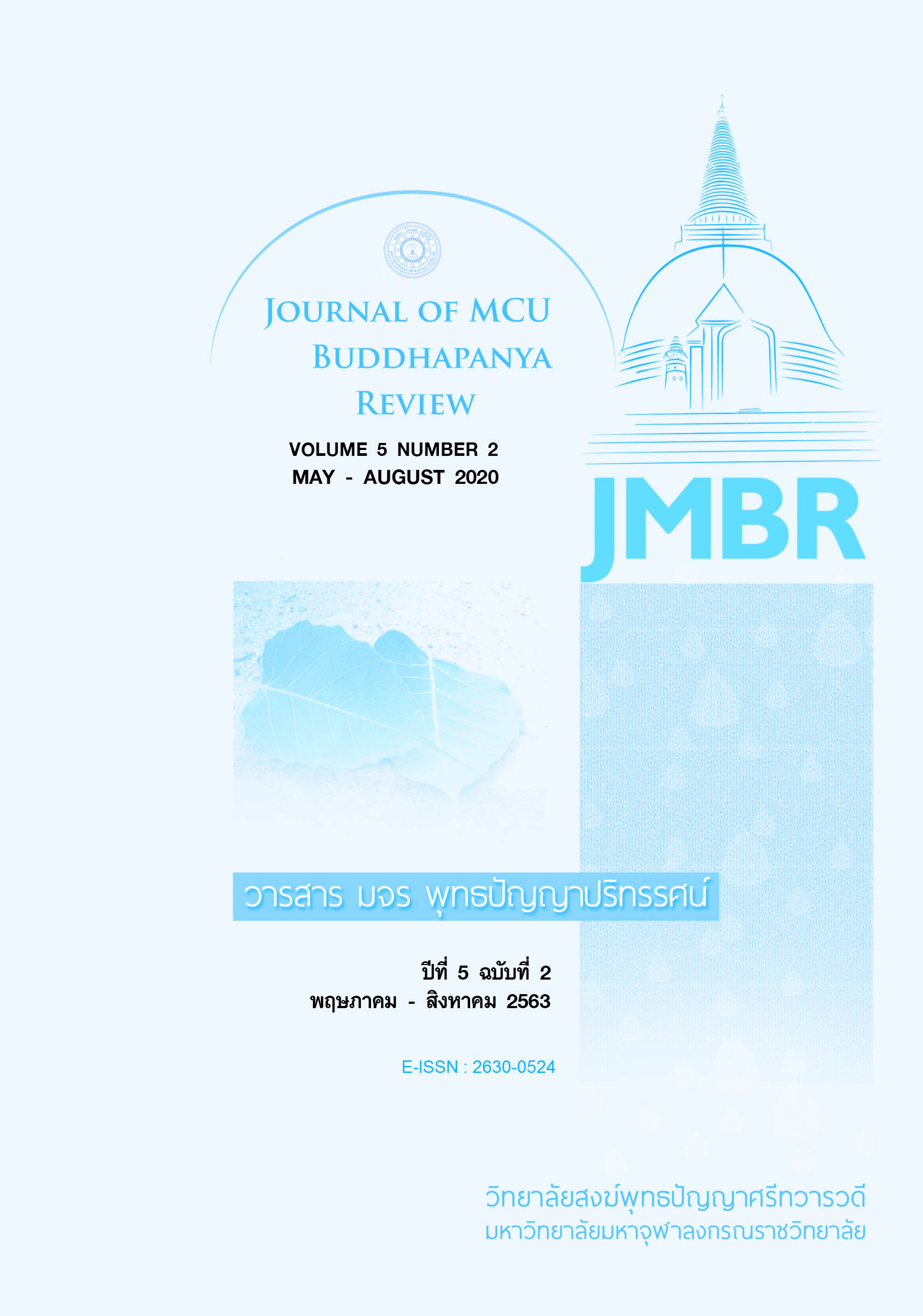โมเดลความสัมพันธ์เชิงสาเหตุความตั้งใจในการซื้อซ้ำสินค้าผ่าน แอปพลิเคชันของผู้บริโภคในเขตกรุงเทพมหานครและปริมณฑล
คำสำคัญ:
โมเดลสมการโครงสร้าง, ความภักดี, ความตั้งใจในการซื้อซ้ำ, แอปพลิเคชันบทคัดย่อ
งานวิจัยนี้ มีวัตถุประสงค์เพื่อพัฒนาโมเดลความสัมพันธ์เชิงสาเหตุความตั้งใจในการซื้อซ้ำสินค้าผ่านแอปพลิเคชันของผู้บริโภคในเขตกรุงเทพมหานครและปริมณฑล และเพื่อตรวจสอบความสอดคล้องของโมเดลความสัมพันธ์เชิงสาเหตุที่พัฒนาขึ้นกับข้อมูลเชิงประจักษ์ โดยใช้แบบสอบถามออนไลน์เป็นเครื่องมือที่ใช้ในการวิจัย และกลุ่มตัวอย่างในการวิจัยครั้งนี้ ได้แก่ ผู้ที่เคยซื้อสินค้าผ่านแอปพลิเคชันช้อปปี้อย่างน้อย 2 ครั้งขึ้นไป และอาศัยอยู่ในเขตกรุงเทพมหานครและปริมณฑล จำนวน 250 คน สถิติที่ใช้ในการวิเคราะห์ข้อมูล ได้แก่ ความถี่ ร้อยละ ค่าเฉลี่ย ส่วนเบี่ยงเบนมาตรฐาน ค่าความเบ้ ค่าความโด่ง และโมเดลสมการโครงสร้างใช้ในการวิเคราะห์ความสัมพันธ์เชิงสาเหตุเพื่อหาเส้นทางอิทธิพลเชิงสาเหตุของตัวแปร ซึ่งประกอบด้วยตัวแปร 4 ด้าน ได้แก่ 1) ด้านความพึงพอใจ 2) ด้านความไว้วางใจ 3) ด้านความภักดี และ 4) ด้านความตั้งใจในการซื้อซ้ำสินค้า
ผลการวิจัยพบว่า โมเดลมีความสอดคล้องกับข้อมูลเชิงประจักษ์เป็นอย่างดี ค่าสัมประสิทธิ์การพยากรณ์เท่ากับ 0.84 แสดงว่าตัวแปรในโมเดลสามารถอธิบายความแปรปรวนของความตั้งใจในการซื้อซ้ำสินค้าผ่านแอปพลิเคชันช้อปปี้ได้ร้อยละ 84 โดยพบว่าด้านความภักดีส่งผลต่อความตั้งใจในการซื้อซ้ำสินค้าผ่านแอปพลิเคชันช้อปปี้มากที่สุด
เอกสารอ้างอิง
York: Morgan James Publishing.
Brandbuffet. (2019). Statistics of digital users around the world, "Thailand" the most
addicted internet in the world - "Bangkok" the highest Facebook user. Retrieved on 10 September 2019 from https://www.brandbuffet.in.th/2018/02/global-and-thailand-digital-report-2018
Chinomona .R., & Dubihlela. D. (2014). Does Customer Satisfaction Lead to Customer
Trust, Loyalty and Repurchase Intention of Local Store Brands? The Case of Gauteng Province of South Africa. Mediterranean Journal of Social Sciences, 5 (9), 23-32.
Kanchanakijsaku, C. (2012). Research methods in social science.
Tak: Project Five - Four.
Das, G. (2014). Impact of Retail Brand Personality & Self-Congruity on Store Loyalty:
The Moderating Role of Gender. Journal of Retailing & Consumer Services, 21,
130-138.
ETDA, (2019). Report of the internet user behavior survey In Thailand 2018,
Bangkok: Office of Strategy Electronic Transactions Development
Agency (Public organization)
Ganiyu, A.R., Uche I.I. & Elizabeth, A. (2012).Is customer satisfaction an indicator of
customer loyalty. Australian Journal of Business & Management Research 2
(70), 14-28.
Haque, M. N. (2013). Enhancing the Image and Brand Equity of Shopping Mall. Studies
in Business and Economics, 8(3), 72-81. Hellier, K., Gus M. Geursen,
Vanichbancha, K. (2013). Statistical analysis: statistics for administration & research
(14th Edition). Bangkok: Department of Statistics, Faculty of Commerce &
Accountancy Chulalongkorn University.
Wiratchai, N. (1999). Model LISREL: Analytical Statistics for research. 3rd Edition,
Bangkok: Chulalongkorn University Printing Unit
Sinlajaru, T. (2012) Research and statistical analysis by SPSS and AMOS.
(13th edition) Bangkok: Business R & D.
Shopee. (2019). Infographic : Revealing interesting statistics from Shopee, this online
shopper desires this. Retrieved on 10 September 2019 from https://www.thumbsup.in.th/online-shopping-trend-by-shopee
Shopee. (2019). Techsauce Team : Shopee reveals more than 80 million users and sells
80 million products in the 12.12 Birthday Sale campaign.
Retrieved on 10 September 2019 from
https://www.marketingoops.com/news/ecommerce/interview-shopee-2018/



